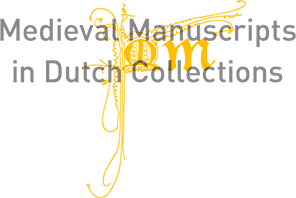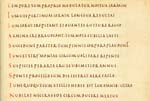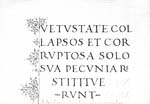Capitalis rustica and Capitalis quadrata
Capitalis rustica
Capitalis rustica, nowadays sometimes referred to as canonical capitalis, was the most important script for rolls and codices from the 1st till the 6th century. It was considered appropriate for classical 'pagan' texts to be visualised in this calligraphic script, at least until the 4th century, when other types of bookscript made their appearance. Biblical texts and works by christian authors, on the other hand, were rarely written in capitalis; from the outset these were almost always written in uncial or half-uncial.
In the Carolingian age luxurious manuscripts were by occasion entirely written in rustic, but by then its use was predominantly limited to the incipit, explicit and rubrics of texts. It consequently occupied a high place in the hierarchy of scripts in the middle ages.
Literature:
- Jean Mallon, Paléographie romaine. Madrid, 1952.
- Johanne Autenrieth, "Litterae Virgilianae". Vom Fortleben einer römischen Schrift. München, 1988 (Schriften des Historischen Kollegs: 14).
Sample
- Leiden, UB : ms. VLQ 79, f. 97r; Northeast-France, second quarter 9th century
[...]
TEMPORE TUM PROPRIO MODULATUR NOCTUA CARMEN
TUM UESPERTINUM CORNIX LONGEUA RESULTAT
TUM CORUI CREPITANT ET OUANTES GUTTURE RAUCO
AGMINA CREBRA UOCANT. TUM NOTA CUBILIA LAETI
SUCCEDUNT PARITER. TUM PENNIS CORPORA PLAUDUNT.
TUNC ET STRYMONIAS CIRCUM UOLITARE REPENTE
SUSPICIES PER ARTA GRUES; UBI MITIOR ANNUS
SPONTE PROCELLOSUM DISIECERIT AERA CAELO.
TUNC QUOQUE CUM STELLIS HEBES EST LUX OMNIBUS ULTRO
NUBILA>
[...]
Capitalis quadrata
The written variant of the epigraphic capitalis quadrata, sometimes referred to as capitalis elegans, imitates the style of antique Roman inscriptions. It was not easy to write, as the representation on parchment of letters normally carved in stone demands a special manipulation of the quill. Altough it seems not to have been used frequently in codices, nevertheless some very luxurious late antique books – the most famous of which are two Vergil-codices written around the year 500 – are written in these monumental capitals.
In the middle ages the incidental use of capitalis quadrata in books was mainly confined to titles and rubrics. Not surprisingly, it was also used to copy ancient Latin inscriptions. Instigated by a renewed attention of the humanists in the later middle ages it became the model for our modern printed square capitals.
Literature:
- Jean Mallon, Paléographie romaine. Madrid, 1952.
- Johanne Autenrieth, "Litterae Virgilianae". Vom Fortleben einer römischen Schrift. München, 1988 (Schriften des Historischen Kollegs: 14).
Sample
-
Utrecht, UB : Cat. 764, f. 7v; Italy (Rome?), before 1483
[...]
VETVSTATE COL-
LAPSOS ET COR-
RVPTOS A SOLO
SVA PECVNIA RE-
STI> RVNT
[...]



